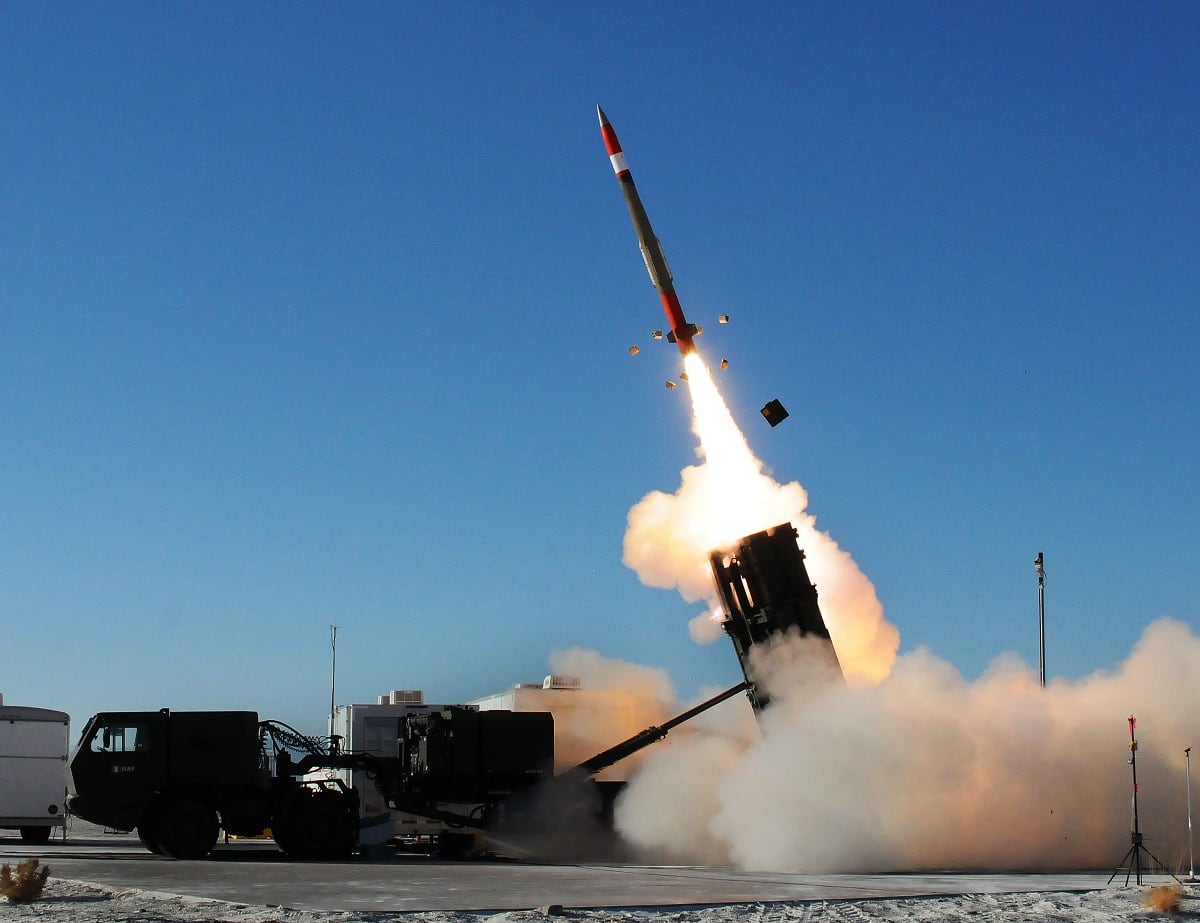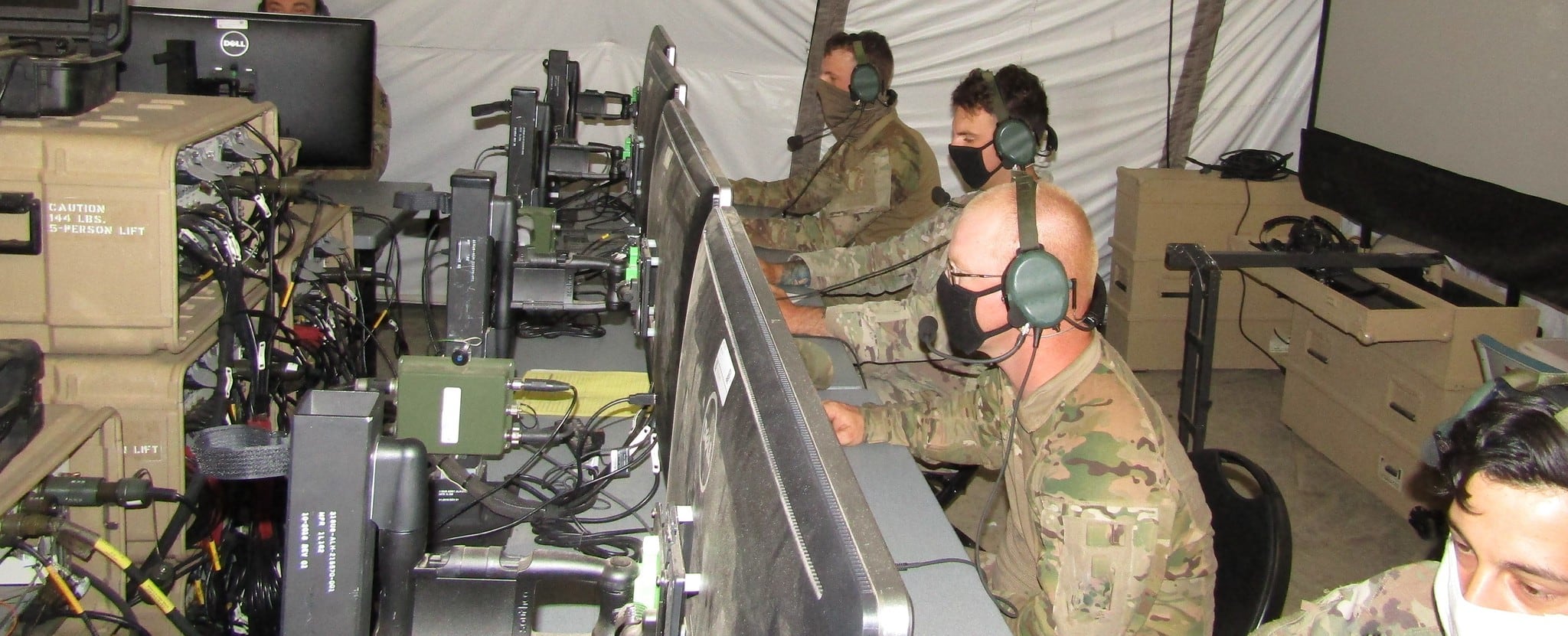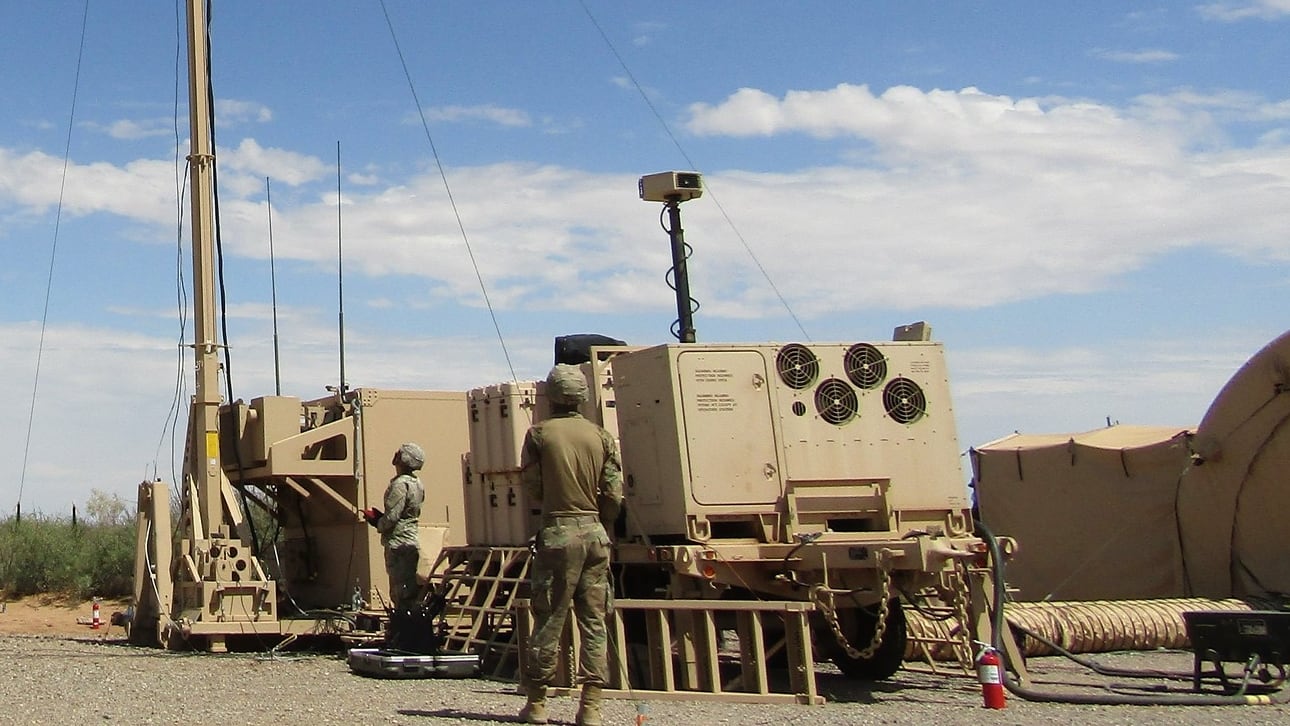For the first time on a new system, an Army battalion did a complex air defense mission, taking out two low-altitude targets simultaneously at more than 50km — all while part of their system was disabled.
The 500 soldiers of the 3rd Battalion, 43rd Air Defense Artillery, pulled that feat off at White Sands Missile Range, New Mexico, as part of the Army’s detailed testing and evaluation of Integrated Air and Missile Defense. The unit, led by Lt. Col. Hailey Bairu, falls under 32nd Army Air and Missile Defense Command, Fort Bliss, Texas.
It’s a mission they’ve been training for, over a period of time, in small pieces both virtual and real, but the effort Thursday was in real time, in the real world.
“The key is today we did it in the dirt and we did it against live targets,” said Gen. John Murray, head of Army Futures Command.
RELATED

The unit’s work, along with many other related efforts in the Defense Department, is being carried out against a backdrop of planning for future large-scale combat operations against near-peer competitors such as Russia or China. And one thing both countries have a lot of is missiles.
So, the Army and the other services are finding ways to lengthen their own firing capabilities and also sense and destroy any enemy intruders in their airspace. Jets can do a lot, but they can’t do it all.
The 3rd Battalion has spent the past year kicking the proverbial tires on new equipment software and building future tactics, techniques and procedures for Army air and missile defense.
And they’ll get a bit of a return on that time investment.
“This unit ultimately becomes the first unit equipped,” said Brig. Gen. Brian Gibson, director of the Air and Missile Defense Cross-Functional Team.

The shoot on Thursday will be followed by another evaluation in the coming weeks. From that point, Army scientists and program managers will spend the coming months pouring through reams of data to analyze what happened when these radars tracked, missiles launched and metal collided.
The setup used AN/MPQ-64 Sentinel radars ahead of the Patriot missile systems’ radar to give the unit minutes more time to decide when and how to fire their interceptors.
The nature of the system also allowed soldiers to fire fewer interceptors to defeat the targets. That’s important because if a battery runs out of interceptors, it’s in trouble.
“Normally we would run out of interceptors, but this test gave us the opportunity to employ that capability,” said Col. Tony Behrens, Army capability manager and director of the Army AMD Command.
But with the Sentinel radar forward, soldiers could “buy back” time in their decisions, he said.
There were two Patriot radars, two Sentinel radars, three Patriot launchers, a battery engagement and battalion engagement center involved.
And, for good measure, testers used electronic warfare to jam one of the soldiers’ seven relays. That was to test whether the necessary data would still make it through to conduct the tracking and defensive firing.
They also did the shoot through debris, which is highly likely in any future combat scenario.
The ultimate aim, though, is “sensor agnostic” experts say.
The IAMD portion for the Army will eventually contribute to a joint sensing and firing system that will tie in Army, Air Force, Navy and Marine Corps sensors and shooters so that commanders at every level can see all of the battlefield, all of its threats and fire from the best platform to take out that threat, Murray said.
That will involve more than distant artillery and some firing from ships. There are plans to integrate drones, jet fighters and even space assets, experts said.
The 343rd is far from finished. They’ll be continuing on with system modifications, evolutions, training scenarios and whatever is needed to fully develop the platforms, communications and software.
“The TTPs are so vastly different at the crew, battalion and battery level,” Behrens said. “We’ve learned a lot from what they’ve done. We’re going to take a lot of that and put it into Army doctrine.”
But even as big gears start turning on how Army missile defense moves forward, the 343rd will be a central piece of that puzzle.
“They’ve become experts in employing this system,” Behrens said. “They’ll be in high demand.”
Todd South has written about crime, courts, government and the military for multiple publications since 2004 and was named a 2014 Pulitzer finalist for a co-written project on witness intimidation. Todd is a Marine veteran of the Iraq War.





